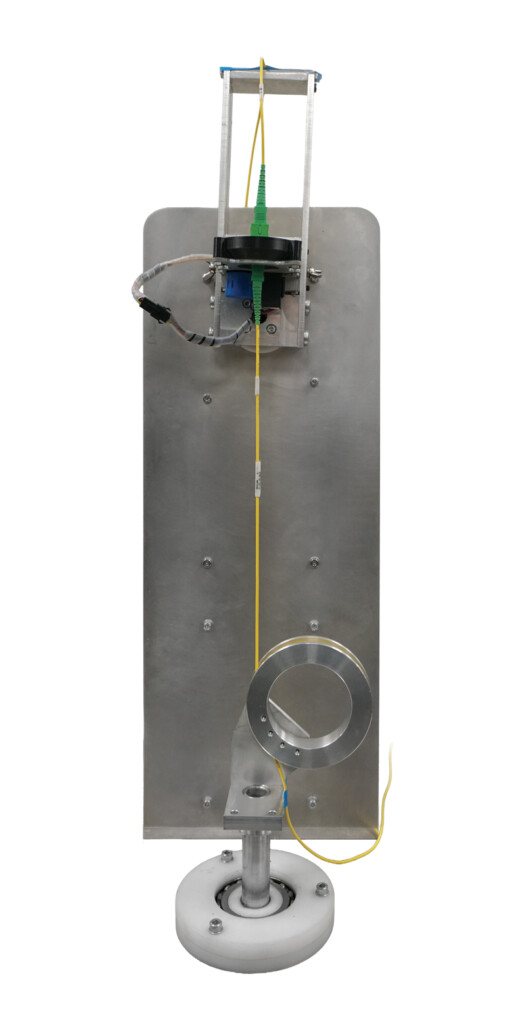New fiber-to-the-home (FTTH) networks are being built at a record pace. An integral part of any fiber network is the fiber jumper assemblies that help interconnect the systems, their branching devices, and fiber drops. Fiber network owners put a lot of emphasis on quality components to ensure a future-proof network with minimal maintenance and power costs that will last at least 15 years, and jumpers are one of those components.
There are cable assemblies, and then there are GR-326 approved cable assemblies. Some cable assemblies are also referred to as “designed to meet or exceed” cable assemblies. However, in this scenario, there is no mention of whether the assembly is Telcordia GR compliant.
Tier 1 and Tier 2 telcom provider networks are reaching further than ever before, which is key in closing the digital divide. To reach new and existing markets, it is vital to consider the elements each network is exposed to. For example, Alaska may see temperatures below –30° Celsius, while Puerto Rico might conversely be exposed to 65° Celsius with 97% relative humidity. This is not unique to these two specific markets. Customers across the globe require high-quality and high-performance cable assemblies to not only survive extreme temperatures, but also to maintain their performance through harsh conditions with minimal change in optical performance over a long period of time.
COMPONENTS
The rigorous design of a GR-326-certified cable assembly requires quality components.
Connectors
Many sources exist in the U.S. and dozens more offshore. When sourcing, look for well-known connector vendors that have a good reputation as well as accreditation for independent testing of their connectors. Be careful of the tested-to-GR-326 statement. Ask to see the certified test report. This will reveal who performed the tests, provide the actual insertion loss and return loss (IL/RL) results over temperature, and expose the baseline pre-test data vs. the post-test data.
Regarding the material itself, concentrate on the ferrule specifications. For example, a 125.5-μm inner diameter (ID) ferrule is recommended for high-performance single-mode (SM) connectors.
The next specification on the checklist is fiber hole concentricity. Use better than 0.5-μm concentricity. These specifications hold true for all SM Connectors with a 2.5-mm or 1.25-mm ferrule. The second component to examine is the connector strain-relief boot. These vary slightly in shape and size, so it is important to test all versions of a vendor’s strain relief boot. Most vendors have at least two or three boot designs.
Cable
Generally speaking, it is commonplace to use a cable composed of top-tier single-mode glass. For cables with jackets ranging from a diameter of 1.6 mm to 3.0 mm, use a jacket material that offers a low (less than 5%) shrinkage rate. All indoor cables will have a certain amount of shrinkage, so to select the best fit, a round-robin approach can identify the right cable for the job. For 900-μm cable, be less concerned about shrink rates. That said, a tightly buffered 900 μm is best for this size of cable assembly.
Epoxy
This is likely the single most important component of the entire cable assembly. Without superior adherence between the glass and the ferrule, temperature cycling IL results would be very erratic. To start, look for a well-known local vendor. Make sure that the epoxy has an operating temperature that exceeds the GR-326 temperature requirements. Ensure the epoxy is rated for a glass transition temperature testing (Tg) of 100° Celsius or better. If a differential scanning calorimetry (DSC) analyzer is not available, many regional labs offer Tg testing.
Lapping Film/Rubber Pads
The accuracy and consistency of pad durometer, pad height, and pad life are instrumental in determining the desired result of the end-face geometry. This can usually be recommended by the machine manufacturer along with the lapping film. Diamond lapping film is required for efficient ferrule end-face shaping, and a silica dioxide final film is recommended for controlling the fiber height of the polish. Attributes such as grit size and density must be checked constantly.

PREPARATION
Ferrules
Ferrules are often machined, which tends to leave some residue in the inside chamber of the ferrule hole from the machining and the ferrule hole itself. Many vendors clean their ferrules before shipment, but an additional cleaning step at the factory provides better results. This will help the adherence of the glass to the ferrule. An ultrasonic cleaner with an isopropyl mix or perhaps a detergent mixed into the water is best to use.
Cable
It is important to use the connector manufacturer’s template for jacket and fiber strip lengths as well as Kevlar lengths. Be sure not to strip the 900-μm coating from the glass until the connector is ready to be terminated. This will prevent the fiber from excessive exposure to air, which has been shown to leave fibers brittle. Once the fibers are stripped of their coating, cleaning the fiber with a lab wipe and acetone has been shown to result in the best performance when observing connector fiber heights over temperature. Once cleaned, the fiber should be immediately terminated to the connector.
Epoxy
Most epoxies used for GR-326 testing are a two-part epoxy (with the previously mentioned specifications). Removing air bubbles from the two-part mix is vital for a fully cured epoxy. This can be done using a centrifuge or a bell-jar-style vacuum. Epoxy with air bubbles can cause attenuation of the fiber over temperature, or even worse, cause a catastrophic failure. The other important factor is the mix ratio. If willing to go with a higher-priced epoxy, a pre-mixed and frozen (PMF) epoxy is a great option to ensure the epoxy is measured to the exact ratio for the two parts and excessive air bubbles are removed.
Polishing Machine
Select a machine vendor with very tight tolerances on their machines and polishing fixtures. The machine should have controls for downward pressure as well as platen speed. Use of a high-quality diamond lapping film is required for consistent geometry shaping of the ferrule end-face. Attributes like grit size and density must be checked constantly.
Fiber Buffer Stripper
The fiber stripper and epoxy are two of the main root causes for latent continuity issues. The desired epoxy specs have been mentioned above, so let’s now focus on the fiber buffer stripper, which is needed to strip the 900-μm tight buffer from the 125-μm glass. The tool is an automated heat-and-strip tool. This is basically a buffer removal tool that uses heat as part of the process to ensure pristine glass, void of nicks or scratches. Lastly, the blades only penetrate a percentage of the buffer, which ensures the blade will never touch the glass.
Years ago (circa 1988), the use of mechanical strip tools was much cheaper and easier to replace. But these tools needed to be inspected every week, or even at a shorter duration, such as daily inspection. The test is quite easy to perform. All that is needed is a high-power microscope to inspect the whole length of the glass fiber to search for nicks and scratches. If any of these defects show up in the microscope, the fiber should be cut even with the buffer. Knicks and scratches are often overlooked.
Mechanical fiber buffer strippers that are calibrated to around 120 μm often cause these defects, which can lead to a nick or scratch to propagate into the cladding and/or fiber core. This would be classified as a catastrophic failure — one that could be avoided by using the automated heated buffer stripper.
Connector Curing Oven
Use of a high-capacity oven that allows the heating element to have direct contact with the ferrule is preferred. More economical ovens are available on the market that position the ferrules/connectors in a loose-fitting fixture, but this type of oven is not likely to achieve a full cure of the epoxy as recommended by the vendor. A Tg measurement is recommended to determine whether the cure time is too short due to the lack of heat transfer to the ferrule fiber hole.
Laser Cleaver
A laser fiber cleaver is recommended for its ability to make consistent cuts to the glass and also for reducing the epoxy bead removal step in the polishing process. The laser cleaver requires cleaning during the day, but has virtually no consumables to replace. Mechanical style cleavers have recently become more accurate and automated, so consider this as an alternative to laser cleaving.
Interferometer
This tool is crucial for the process design and as part of the manufacturing process for connector polishing. Most of today’s interferometers will do the job, but using a well-known brand that offers regional customer support is ideal.
IL/RL test equipment
It’s common knowledge that laser and power meter (LPM) testing is the most accurate way to measure mated-pair-connector loss/reflectance. The equipment selected to perform insertion loss (IL) and return loss (RL) measurements should have good dynamic range, accuracy, and repeatability. Choose a well-known test equipment vendor whose equipment offers a database and the ability to serialize and store IL/RL results. This is very important, as the GR-326 requires test results and component traceability.
PROCESS
This section outlines the process details and tips. Let’s start with connector curing. If the epoxy vendor specifies a certain cure schedule, pick one and add either five degrees or another five minutes as a buffer for the cure schedule.
Polishing
The quality of the rubber pads the lapping film is placed on is just as important as the quality of the lapping film. Determining which rubber pad is needed requires a bit of process development, with ferrule pre-dome and ferrule hardness as the main variables in the equation. Empirical testing and a good-quality rubber pad can dial in the process as needed. Care in the maintenance of the rubber pad in manufacturing is of utmost importance. Ultraviolet (UV) light from ambient sunlight can cause the rubber to lose the durometer specified by the vendor.
Geometry
The current specification for ferrule radius is from 10 μm to 25 μm. Because there is a temporary deformation of the ferrule end face when mated and certain interferometers may have different tolerances, it is recommended to start with a geometry limit that is well within the GR-326 limit. For example, use an acceptable range of 12 μm to 22 μm, as opposed to accepting results that may be a few tenths of a micron inside of the limit.
Further, the geometries can be altered to reflect optimal performance, such as by using different durometer rubber pads and sometimes different pad heights, depending on the polish machine’s manufacturer. Much like the radius requirements, the fiber height should have an internal control that is well inside the GR-326 limit. Because the post-cycling geometry limits for fiber height are +50 nm to -50 nm, pre-test fiber heights should be in the +10 nm to -40 nm range. Apex offset is usually a function of rubber pad quality and/or polish plate quality.
TESTING
For pretest IL and RL measurements, consider using an internal limit of better than 0.2 dB (objective) and 0.4 dB (requirement) to allow for some fluctuation that will certainly happen to some extent due to temp cycle/aging. The company can usually choose whether it uses a random mating process or a master test jumper for testing. This will need to be determined before environmental testing.
CONCLUSION
A good amount of empirical testing is required to fine-tune the GR-326 process. Consequently, this is the reason there are only a few Telcordia GR-326 approved cable assemblies. Beware of creative wording by the cable assembly vendors that imply they do Telcordia-witnessed or approved testing. In the end, it is an investment. Many Tier-1 providers require Telcordia-approved assemblies, and it follows that this is why GR-326-approved and accredited jumpers fetch a higher price. Quality is worth paying for, and some companies demand it.
Printed with permission from Clearfield, Inc.
www.seeclearfield.com

Jim Henschel is the Engineering Compliance Director at Clearfield, Inc. He is a seasoned fiber optic process and development engineer with over three decades of expertise in fiber optic technology, manufacturing, and innovation. Since beginning his career in 1988, Henschel has contributed to several successful fiber optic manufacturers, driving advancements in fiber design, signal transmission, and system durability. His dedication to innovation has resulted in multiple fiber optic-related patents, and he led a team that enabled their company to become the first to successfully pass a GR-326 test program at Telcordia, setting an industry benchmark for reliability. A graduate of Blackstone Valley Technical’s electronic engineering program, Henschel later attended Dean College, further strengthening his technical foundation and problem-solving skills.
